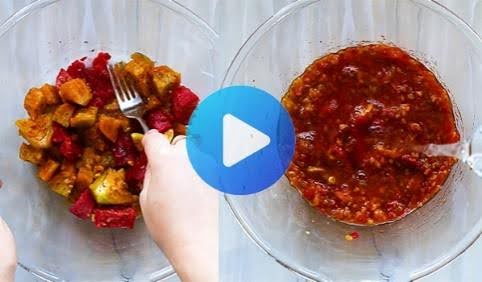Hello there. As someone who helps people, especially women, find healthy ways to manage their weight, I often get asked about quick fixes. Things like special diets or magic pills. While those usually don’t work long-term, there’s one simple tool that can be really helpful when used correctly: the smoothie.
Now, I know what some of you might be thinking. Aren’t smoothies full of sugar. Or maybe, can a drink really keep me full. Those are fair questions. The truth is, a smoothie is only as good as what you put into it. A smoothie loaded with ice cream, sugary syrups, and fruit juice isn’t much different from a milkshake. That kind won’t help you lose weight.
But a smart smoothie. One packed with the right stuff. That’s a different story. It can be a fantastic way to get important nutrients, control your calorie intake, and even feel full and satisfied. It’s all about making smart choices.
Think of it like building with blocks. You need the right blocks, in the right amounts, put together in the right way to build something strong. A weight loss smoothie is similar. You need the right ingredients, in the right balance, to support your goals.
Why Smoothies Can Work for Weight Management
Let’s break down why a well-made smoothie can be a great partner in your weight loss journey.
Controlling Calories
Weight loss fundamentally comes down to energy balance. You need to use slightly more energy (calories) than you take in. Smoothies can make this easier. When you blend whole fruits, vegetables, protein sources, and healthy fats, you know exactly what’s going into your meal. It’s much easier to track the calories in a smoothie you make at home compared to a complex meal or restaurant food.
You can measure your ingredients precisely. A cup of spinach, half an avocado, a scoop of protein powder, a tablespoon of chia seeds. You add it up, and you have a good estimate of the calories. This control is super helpful when you’re trying to stay within a certain calorie target for the day.
Packing in Nutrients
Losing weight shouldn’t mean missing out on important vitamins and minerals. In fact, when you eat fewer calories, it becomes even more important to make sure the foods you do eat are packed with goodness.
This is where smoothies shine. You can blend in things you might not normally eat large amounts of on their own. Think about spinach, kale, beets, or celery. You can easily add a large handful of greens to a smoothie without drastically changing the taste, especially when balanced with fruit. You’re getting fiber, vitamins, and minerals all in one easy-to-drink package.
For women, getting enough nutrients like iron, calcium, and folate is crucial. Smoothies can be an easy way to boost your intake of these by including ingredients like leafy greens (iron, folate), fortified plant milks or yogurt (calcium), and seeds (iron, calcium).
The Power of Fiber
Fiber is your friend when it comes to weight loss. It does a few key things:
- Keeps you full: Fiber absorbs water and expands in your stomach, helping you feel satisfied for longer. This reduces the chances of snacking between meals.
- Slows digestion: It helps slow down how quickly sugar enters your bloodstream, preventing those energy crashes that make you crave sugary snacks.
- Supports gut health: A healthy gut plays a role in weight management, and fiber feeds the good bacteria in your digestive system.
Whole fruits, vegetables, nuts, and seeds are excellent sources of fiber. When you blend these into a smoothie (instead of juicing, which removes fiber), you keep all that fibrous goodness.
Protein for Satiety and Muscle
Protein is another key player. Like fiber, protein helps you feel full. It also takes more energy for your body to digest protein compared to carbs or fat, which gives your metabolism a tiny boost.
Most importantly, protein is essential for maintaining muscle mass, especially when you’re losing weight. You want to lose fat, not muscle. Muscle tissue burns more calories at rest than fat tissue does. So, keeping your muscle mass helps keep your metabolism running efficiently.
Adding protein powder (whey, casein, soy, pea, rice), Greek yogurt, cottage cheese, or even silken tofu to your smoothies is a great way to ensure you’re getting enough protein to support satiety and muscle health.
Convenient and Quick
Let’s be honest, life gets busy. Sometimes, finding the time to prepare a healthy meal feels impossible. A smoothie takes minutes to make. Toss your ingredients in the blender, blend, and go. This convenience can be a lifesaver on hectic mornings or when you need a quick post-workout recovery meal. When healthy eating is easy, you’re more likely to stick with it.
Building the Perfect Weight Loss Smoothie
Okay, so we know why smoothies can work. Now, let’s talk about how to build one that actually helps you reach your goals. Think of this as your smoothie blueprint.
1. Pick Your Liquid Base (Wisely)
This is the foundation. Avoid sugary fruit juices or sweetened milks.
You Might Be Interested In: Learning more about The Complete Smoothie Detox & Weight Loss Program
- Good choices: Water, unsweetened almond milk, unsweetened soy milk, unsweetened cashew milk, coconut water (in moderation, as it has natural sugars), green tea (cooled).
- Amount: Usually 1 to 1.5 cups is a good starting point.
2. Add Your Greens (Lots of Them)
This is where you load up on nutrients and fiber without adding many calories. Don’t be shy.
- Good choices: Spinach (mildest taste), kale, romaine lettuce, Swiss chard, cucumber, celery.
- Amount: 1-2 large handfuls. Start with spinach if you’re new to green smoothies.
3. Choose Your Fruits (In Moderation)
Fruit adds natural sweetness, vitamins, and more fiber. But fruit also contains sugar (fructose), so portion control is key. Focus on lower-sugar fruits or balance them out.
- Good choices: Berries (strawberries, blueberries, raspberries – lower in sugar, high in antioxidants), half a banana (adds creaminess), apple, pear, peach, mango, pineapple (use smaller amounts of higher-sugar fruits). Frozen fruit works great and makes the smoothie cold and thick.
- Amount: About 1/2 to 1 cup total.
4. Include a Protein Source (Essential)
This makes your smoothie filling and supports muscle.
- Good choices: Plain Greek yogurt (high in protein), cottage cheese, scoop of protein powder (whey, casein, soy, pea, hemp), silken tofu.
- Amount: 1 scoop of powder, 1/2 cup yogurt/cottage cheese, or follow package directions.
5. Add Healthy Fats (For Satiety)
Healthy fats help you feel satisfied and absorb certain vitamins. They are calorie-dense, so measure carefully.
- Good choices: Avocado (makes it super creamy), chia seeds, flax seeds, hemp seeds, nut butter (almond, peanut, cashew), nuts (walnuts, almonds).
- Amount: 1/4 avocado, 1 tablespoon seeds, 1-2 tablespoons nut butter, or a small handful of nuts.
6. Boosters (Optional Flavor and Nutrients)
These can add extra flavor or health benefits.
- Good choices: Cinnamon, ginger (fresh or powdered), turmeric, unsweetened cocoa powder, vanilla extract, matcha powder, oats (add fiber and thickness).
- Amount: Teaspoon to tablespoon, depending on the ingredient.
Common Smoothie Mistakes to Avoid
Making a smoothie seems simple, but a few common mistakes can turn your healthy drink into a calorie bomb that hinders weight loss.
- Mistake 1: Too Much Fruit/Sugar. Using multiple servings of high-sugar fruits or adding sweeteners like honey, maple syrup, or agave nectar can quickly spike the calorie and sugar content. Stick to one serving of fruit and rely on the fruit itself for sweetness.
- Mistake 2: Not Enough Protein. A smoothie made of just fruit and liquid won’t keep you full for long. You’ll likely feel hungry again soon. Always add a good protein source.
- Mistake 3: Not Enough Fiber. Using fruit juice instead of whole fruit, or forgetting your greens and seeds, means you miss out on fiber’s filling power. Always include fiber-rich ingredients.
- Mistake 4: Oversized Portions. Even healthy ingredients have calories. Using huge amounts of nut butter, seeds, or multiple servings of fruit can lead to a very high-calorie smoothie. Measure your ingredients.
- Mistake 5: Drinking It Too Fast. Gulping down your smoothie means your brain doesn’t get the signal that you’re full until you’ve possibly consumed too much. Sip it slowly, just like you would eat a meal.
- Mistake 6: Relying Only on Smoothies. Smoothies can be a great meal replacement or snack, but whole foods are also important. Chewing food also contributes to satiety signals. Aim for a balance; maybe replace one meal a day with a smoothie, not all of them.
Sample Weight Loss Smoothie Ideas
Here are a few combinations to get you started. Remember to adjust based on your preferences and what you have on hand.
Green Machine Smoothie
- 1 cup unsweetened almond milk
- 1 large handful spinach
- 1/2 cup frozen berries (like blueberries or raspberries)
- 1 scoop vanilla protein powder
- 1 tablespoon chia seeds
- Optional: 1/4 avocado for extra creaminess
Berry Protein Powerhouse
- 1 cup water or unsweetened soy milk
- 1/2 cup plain Greek yogurt
- 1/2 cup mixed frozen berries
- 1/2 banana (frozen works well)
- 1 tablespoon flax seeds
- Small handful kale (optional)
Chocolate Peanut Butter Delight (Healthy Version)
- 1 cup unsweetened almond milk
- 1 scoop chocolate protein powder
- 1 tablespoon natural peanut butter (unsweetened)
- 1/2 frozen banana
- 1 tablespoon unsweetened cocoa powder
- 1 handful spinach (you won’t taste it)
Creamy Avocado Green Goodness
- 1.5 cups water
- 1/4 avocado
- 1/2 cup cucumber chunks
- 1 large handful spinach or kale
- 1 scoop unflavored or vanilla protein powder
- Juice of 1/2 lime (optional, for brightness)
- 1 tablespoon hemp seeds
Smoothies as Part of Your Day
How do you fit these into your routine.
- Breakfast: A smoothie is a fantastic way to start your day, especially if you’re short on time. A protein-and-fiber-rich smoothie can keep you full until lunch.
- Lunch Replacement: If lunch is often rushed or unhealthy takeout, a pre-planned smoothie can be a great alternative. Make sure it’s balanced enough (protein, fat, fiber) to count as a meal.
- Post-Workout: After exercising, your muscles need protein for repair. A smoothie with protein powder is an easy and quick way to refuel. You might add a bit more fruit here to replenish energy stores.
- Healthy Snack: A smaller, lower-calorie smoothie can work as a snack to tide you over between meals, preventing you from reaching for less healthy options.
Remember, a smoothie is typically one meal or snack, not an addition to your regular meals if weight loss is the goal. Be mindful of your total daily calorie intake.
Beyond the Blend: Other Important Factors
While smart smoothies can definitely help, they are just one piece of the puzzle. Sustainable weight loss involves a holistic approach.
The Role of Exercise
You can’t out-blend a bad diet, and you can’t rely solely on diet without movement. Exercise is crucial for burning calories, building metabolism-boosting muscle, improving heart health, and boosting your mood.
For women, incorporating both cardiovascular exercise (like brisk walking, jogging, cycling, dancing) and strength training (using weights, resistance bands, or bodyweight) is ideal. Strength training is particularly important for maintaining muscle mass during weight loss and supporting bone health. Aim for a mix of activities you enjoy throughout the week.
Hydration is Key
Sometimes thirst is mistaken for hunger. Staying well-hydrated is important for overall health and can support weight loss efforts. Water is usually the best choice. While smoothies contribute to your fluid intake, don’t forget to drink plain water throughout the day.
Sleep Matters
Lack of sleep can mess with the hormones that control hunger and appetite (ghrelin and leptin). When you’re sleep-deprived, you’re often hungrier and may crave higher-calorie foods. Aim for 7-9 hours of quality sleep per night. It really does impact your weight loss efforts.
Mindful Eating
Pay attention to your body’s hunger and fullness cues. Eat slowly, savor your food (even your smoothie), and stop when you feel comfortably full, not stuffed. Avoid eating while distracted (like watching TV or working). This applies to smoothies too – sip slowly and mindfully.
Consistency Over Perfection
Healthy living isn’t about being perfect. It’s about making consistent, positive choices most of the time. There will be days when you don’t eat perfectly or miss a workout. That’s okay. Don’t let it derail you. Just get back on track with your next meal or next workout. Progress, not perfection, is the goal.
Smoothies can be a delicious, convenient, and nutritious tool in your weight loss toolkit. By focusing on whole ingredients, balancing protein, fiber, and healthy fats, and being mindful of portion sizes, you can create satisfying drinks that support your goals. Remember to combine them with regular exercise, good hydration, adequate sleep, and mindful eating habits for the best results.
Related YouTube Video
Here is a video that shares some smoothie recipes you might find helpful:
Final Thoughts
Using smoothies the right way can really make a difference. It’s about being smart with your ingredients and seeing them as part of a bigger plan. Think balanced meals, regular movement, enough sleep, and drinking water. When you put all these pieces together, smoothies can be a great helper on your path to feeling healthier and managing your weight effectively. It’s not magic, but it’s a practical step you can take.







